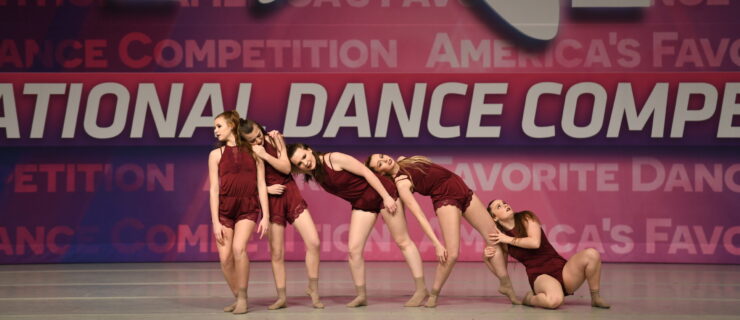How to Keep Your Cool at Jam-Packed Conventions
Convention ballrooms are always exciting, but sometimes they can also be overwhelming, with hundreds of dancers jockeying for space—and attention—on the carpeted floor. Whether it’s your first time attending a convention or you’re a seasoned faculty member, everyone has a role to play to keep jam-packed classes feeling safe and uplifting. Here’s how teachers can manage crowded convention environments, and how students can navigate them.
For Teachers
Connect With the Wallflowers
In large classes, shyer dancers can sometimes get lost—or hide—in the crowd. Ezra Sosa, who teaches ballroom styles at Streetz Dance Convention, will frequently hop off the main stage and head to the middle or back of the ballroom floor to dance with students or give them a closer look at his footwork and movements. “It allows me to connect with the kids who may be a bit more shy, and shows them that I know what it’s like to be a student,” he explains.
When the room is filled to the brim, REVEL Dance Convention teacher Miles Keeney sets a lighthearted tone to diffuse tension and encourage less-confident dancers to come out of their shells. “I’ll crack jokes and do my best to disarm any competitiveness or seriousness,” he says. “I want the dancers to tap into their star quality and performance throughout the class.”
See the Whole Room
It can be visually tough for teachers to keep track of so many dancers at once. “One tip I learned from assisting [teacher, choreographer, and director] Jaci Royal was to avoid laser-focusing too much,” Sosa says. “Instead, scan the room with a soft focus. Then, if someone stands out, you can address whatever they may need help with.”
Big classes are sure to be overflowing with talent, but Keeney suggests resisting the temptation to bring large groups of standouts onstage to help demonstrate the combination. “It’s fine to call up dancers now and then, but if there are too many people onstage, it dilutes the visual of having your assistants in an evenly spaced formation that’s easy for the students to follow,” he says.
For Students
Own Your Space
At a packed convention, the parquet ballroom floor will always be in high demand—but it’s not necessarily the best real estate in the room. Always prioritize your safety and ability to dance full-out. “I like to learn in the back or corners, so I can really get the choreography into my body,” says Gabby Rembert, who assists at Tremaine Dance Conventions and DEViATE Dance. “Then when it’s time to dance in groups, try to be one of the first on the floor, and don’t be afraid to own your space.”
Keeney encourages dancers to change their positions in the room frequently during class. “Dancers tend to stand in clumps of friends from the same studio, but the whole point of coming to a convention is to learn from new people,” he says. “You never know whose energy is going to amp you up in a different way, and it’s also a valuable skill for auditions and the professional world to be able to adapt quickly to dancing in different spots.”
Hoping to attract the teacher’s notice, no matter where you’re standing? “Always start with some kind of freestyle as soon as the music comes on,” Keeney says. “Your improv is definitely not the time to be humble!”
Stay Engaged
Convention days are long, and it can be tempting to mentally check out when you feel lost in a sea of dancers. But you’re never out of sight. “I definitely notice when dancers sit out or start to goof off during class,” Sosa says. “It’s important to uphold the standard for respect and class etiquette.”
Keeney emphasizes that watching from the sidelines is one of the most valuable parts of attending a large convention. “There are brilliant artistic choices being made, and you never know what or who is going to inspire you to try something new,” he says. “Use your time on the sidelines to watch the assistants or fellow dancers, practice the choreo, or listen more closely to your music.”




